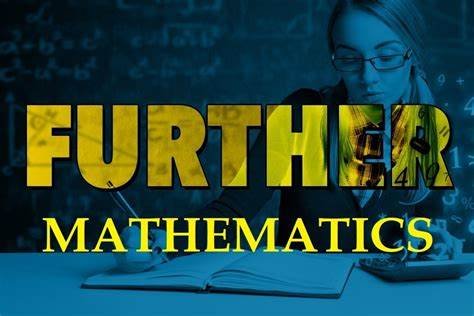This comprehensive breakdown of the SSS 1 further Mathematics Scheme of Work for the second term provides a structured learning path for students to understand and master key mathematical concepts. The topics covered focus on functions, sequences, inequalities, and trigonometry, which will be crucial for further studies in mathematics.
SSS 1 Further Mathematics Scheme of Work for Second Term
| Week | Topic | Content |
|---|---|---|
| Week 1 | Revision | Overview of previous topics, refresher on concepts learned so far. |
| Week 2 | Functions | Understanding functions, domain, range, and types of functions. |
| Week 3 | Sequence and Series | Introduction to sequences, series, arithmetic and geometric progressions, and their formulas. |
| Week 4 | Sequence and Series (Continued) | Further exploration of sequences and series, solving related problems. |
| Week 5 | Linear Inequalities | Understanding linear inequalities, graphing solutions, and solving inequality problems. |
| Week 6 | Linear Inequalities (Continued) | Further practice and problem-solving involving linear inequalities. |
| Week 7 | Trigonometry Ratios | Introduction to trigonometric ratios (sine, cosine, tangent), their applications, and solving problems. |
| Week 8 | Revision | Review of all topics covered during the term to ensure understanding and application of knowledge. |
| Week 9 | Examination | Final assessment based on the content taught during the term, including practical and theoretical questions. |
Week 1: Revision
Explanation:
In this week, students will revise all the topics covered in previous terms, refreshing their memory and reinforcing concepts. This revision is critical to ensure that foundational knowledge is solid before moving to more advanced topics.
Examples:
- Review of Algebraic Expressions: Simplifying expressions and solving basic equations.
- Review of Fractions: Operations with fractions, including addition, subtraction, multiplication, and division.
- Review of Quadratic Equations: Solving simple quadratic equations using factorization and the quadratic formula.
- Review of Ratios and Proportions: Understanding direct and inverse proportions and solving related problems.
- Review of Geometry: Key concepts in angles, circles, and polygons.
- Review of Number Theory: Divisibility rules, prime numbers, and least common multiple (LCM).
Week 2: Functions
Explanation:
A function is a relation between a set of inputs and a set of possible outputs. This topic focuses on understanding how functions work, their notation, and how to identify their domain and range.
Examples:
- Function Notation: f(x) represents a function, where x is the input and f(x) is the output.
- Domain: The set of all possible inputs (x-values) that a function can accept.
- Range: The set of all possible outputs (y-values) that a function can produce.
- Linear Functions: Functions where the graph is a straight line (e.g., f(x) = 2x + 3).
- Quadratic Functions: Functions that form parabolas (e.g., f(x) = x² – 4x + 3).
- Piecewise Functions: Functions defined by different expressions for different intervals of x.
Week 3: Sequence and Series
Explanation:
Sequences are ordered lists of numbers, while series is the sum of terms in a sequence. This week introduces arithmetic and geometric sequences and series, along with their formulas.
Examples:
- Arithmetic Sequence: A sequence where each term is obtained by adding a constant value to the previous term (e.g., 2, 5, 8, 11,…).
- Geometric Sequence: A sequence where each term is obtained by multiplying the previous term by a constant (e.g., 3, 6, 12, 24,…).
- Common Difference (d): The difference between consecutive terms in an arithmetic sequence.
- Common Ratio (r): The ratio between consecutive terms in a geometric sequence.
- Sum of Arithmetic Series: The sum of the terms in an arithmetic sequence, given by the formula: S_n = n/2 * (2a + (n – 1)d).
- Sum of Geometric Series: The sum of the terms in a geometric sequence, given by the formula: S_n = a(1 – rⁿ) / (1 – r) for |r| < 1.
Week 4: Sequence and Series (Continued)
Explanation:
In this week, students will continue exploring more complex problems involving sequences and series, applying the formulas learned in Week 3 to solve real-world problems.
Examples:
- Finding the nth Term: Given the first term and the common difference or ratio, students will calculate the nth term of arithmetic and geometric sequences.
- Solving Word Problems: Applying arithmetic and geometric sequences to solve problems related to population growth, savings plans, and more.
- Sum of Infinite Geometric Series: Calculating the sum of an infinite geometric series with |r| < 1 using the formula S = a / (1 – r).
- Recursive Sequences: Sequences where each term is defined by a recurrence relation.
- Real-life Applications of Sequences: Using sequences to model situations such as the growth of a bank balance over time with compound interest.
- Comparing Sequences: Identifying when a sequence is arithmetic or geometric and solving for unknown terms.
Week 5: Linear Inequalities
Explanation:
Linear inequalities are expressions involving variables and inequalities. In this topic, students will learn how to solve and graph linear inequalities.
Examples:
- Inequality Symbols: Understanding the symbols <, >, ≤, ≥, and how they affect the solution.
- Solving Linear Inequalities: Solving inequalities like 2x + 5 < 11 and graphing the solution on a number line.
- Compound Inequalities: Solving inequalities that involve two or more inequalities, such as 3 ≤ x + 4 < 7.
- Graphing Inequalities: Representing the solution of an inequality on a number line or coordinate plane.
- Applications of Inequalities: Solving problems that involve constraints, such as budgeting and production limits.
- Word Problems Involving Inequalities: Solving real-world problems that require the use of inequalities.
Week 6: Linear Inequalities (Continued)
Explanation:
Further practice with linear inequalities, focusing on more complex problems and deeper applications in real-world contexts.
Examples:
- Systems of Linear Inequalities: Solving systems of inequalities and finding the solution set that satisfies all inequalities.
- Graphing Systems: Graphing systems of linear inequalities and determining the feasible region.
- Inequalities with Fractions: Solving and graphing inequalities that involve fractions.
- Solving Word Problems: Applying linear inequalities to solve problems involving time, distance, and speed.
- Optimization Problems: Using inequalities to find the maximum or minimum value that satisfies certain conditions.
- Interval Notation: Representing the solution of an inequality using interval notation.
Week 7: Trigonometry Ratios
Explanation:
This week introduces the basic trigonometric ratios (sine, cosine, and tangent) and their applications in solving right-angled triangle problems.
Examples:
- Sine Ratio (sin θ): The ratio of the opposite side to the hypotenuse in a right triangle.
- Cosine Ratio (cos θ): The ratio of the adjacent side to the hypotenuse in a right triangle.
- Tangent Ratio (tan θ): The ratio of the opposite side to the adjacent side in a right triangle.
- Trigonometric Identities: Basic identities like sin² θ + cos² θ = 1.
- Using Trigonometry to Find Unknown Sides: Solving for unknown sides of a right triangle using sine, cosine, or tangent.
- Angle of Elevation and Depression: Using trigonometry to solve problems involving angles of elevation and depression in real-life scenarios.
Week 8: Revision
Explanation:
A week dedicated to revising all the topics covered during the term. Students will consolidate their knowledge, ensuring they are prepared for the final examination.
Week 9: Examination
Explanation:
The examination week will assess the students’ understanding of the entire syllabus covered in the second term, testing both theoretical and practical skills in mathematics.




